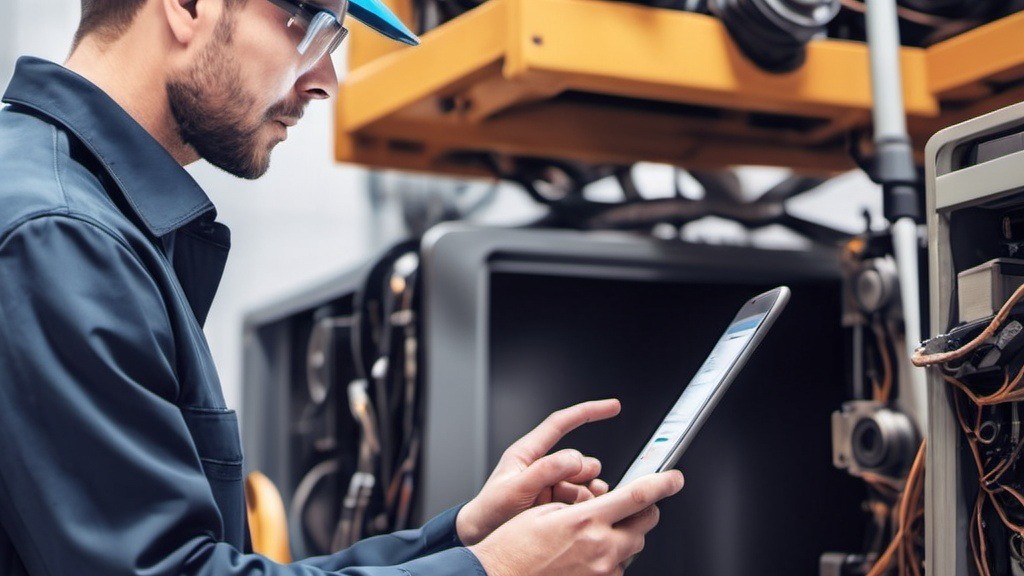In today’s rapidly evolving technological landscape, the integration of AI monitoring for household systems has become a pivotal aspect of modern living. This transformation is not only making homes smarter but also more efficient and secure. As we delve into the world of AI and its impact on household systems, it’s imperative to understand the nuances and benefits that come with it.

Understanding AI Monitoring
AI monitoring refers to the use of artificial intelligence to oversee and manage various functions within a home. These systems are designed to ensure optimal performance, energy efficiency, and safety. By analyzing data in real-time, AI can predict potential issues before they become significant problems, thereby saving homeowners both time and money.
The Evolution of Smart Homes
The concept of smart homes has been around for a while, but it’s the integration of AI that has propelled it to new heights. From predictive maintenance to energy management, AI is at the forefront of making homes more intuitive and responsive to the needs of their occupants.
Benefits of AI Monitoring in Homes
Energy Efficiency
One of the primary advantages of AI monitoring is its ability to enhance energy efficiency. By analyzing usage patterns, AI systems can adjust heating, cooling, and lighting in real-time to conserve energy and reduce utility bills. Learn more about smart maintenance benefits.
Enhanced Security
AI monitoring systems are also instrumental in bolstering home security. These systems can detect unusual activities, send alerts, and even take preventive actions to safeguard the property. Whether it’s through smart cameras or automated locks, AI ensures that homeowners can rest easy knowing their homes are protected.
Predictive Maintenance
Another significant benefit of AI monitoring is its ability to predict maintenance needs. By continuously assessing the condition of various household systems, AI can alert homeowners of potential issues before they escalate. This proactive approach not only reduces repair costs but also extends the lifespan of appliances and systems. For more details on automated maintenance alerts, visit Nolix AI.
How AI Monitoring Works
Data Collection and Analysis
At the core of AI monitoring is data collection. Sensors installed in various parts of a home continuously gather data, which is then analyzed by AI algorithms. This data-driven approach allows the system to make informed decisions and provide actionable insights to homeowners.
Machine Learning
Machine learning plays a crucial role in the functioning of AI monitoring systems. By learning from historical data, these systems can identify patterns and predict future occurrences. This capability is particularly useful in areas such as energy management and security.
Integration with Smart Devices
AI monitoring systems are designed to work seamlessly with other smart devices in a home. Whether it’s a smart thermostat, lighting system, or security camera, AI ensures that all devices communicate effectively to provide a cohesive and efficient living environment.
Challenges in Implementing AI Monitoring
Data Privacy Concerns
While AI monitoring offers numerous benefits, it also raises concerns about data privacy. Homeowners need to be assured that their data is secure and that systems are compliant with privacy regulations. It’s crucial for companies to implement robust security measures to protect user data.
Cost of Implementation
The initial cost of implementing AI monitoring systems can be a barrier for some homeowners. However, the long-term savings on energy bills and maintenance costs often justify the investment. Explore predictive control systems to understand the cost-benefit analysis.
Technology Adoption
Adopting new technology can be challenging, especially for those unfamiliar with AI. Education and awareness are key to overcoming this hurdle. Homeowners should be encouraged to learn about the benefits and functionalities of AI monitoring systems to make informed decisions.
The Future of AI in Household Systems
Continuous Advancements
The field of AI is continuously evolving, and so are its applications in household systems. With advancements in technology, AI monitoring will become more sophisticated, offering even greater benefits to homeowners.
Increased Accessibility
As AI technology becomes more widespread, it will also become more accessible to a broader audience. This increased accessibility will ensure that more homeowners can take advantage of the benefits that AI monitoring offers.
Integration with IoT
The integration of AI with the Internet of Things (IoT) will further enhance its capabilities. By connecting more devices and systems, AI can provide a more comprehensive and efficient monitoring solution for homes. Read about predictive safety checks to explore how AI and IoT work together.
Conclusion
AI monitoring for household systems is a game-changer in the world of smart homes. By providing enhanced energy efficiency, security, and predictive maintenance, AI is transforming how we live. As technology continues to advance, the potential for AI in household systems is limitless, promising a future where homes are not only smarter but also more sustainable and secure.

FAQs
1. What is AI monitoring in household systems?
AI monitoring in household systems involves the use of artificial intelligence to manage and optimize various home functions, such as energy usage, security, and maintenance.
2. How does AI improve home security?
AI improves home security by analyzing data from security cameras and sensors to detect unusual activities and sending alerts to homeowners for prompt action.
3. Is AI monitoring cost-effective?
While the initial setup of AI monitoring systems can be costly, the long-term savings from reduced energy bills and maintenance costs make it a cost-effective solution for many homeowners.
This article contains affiliate links. We may earn a commission at no extra cost to you.

